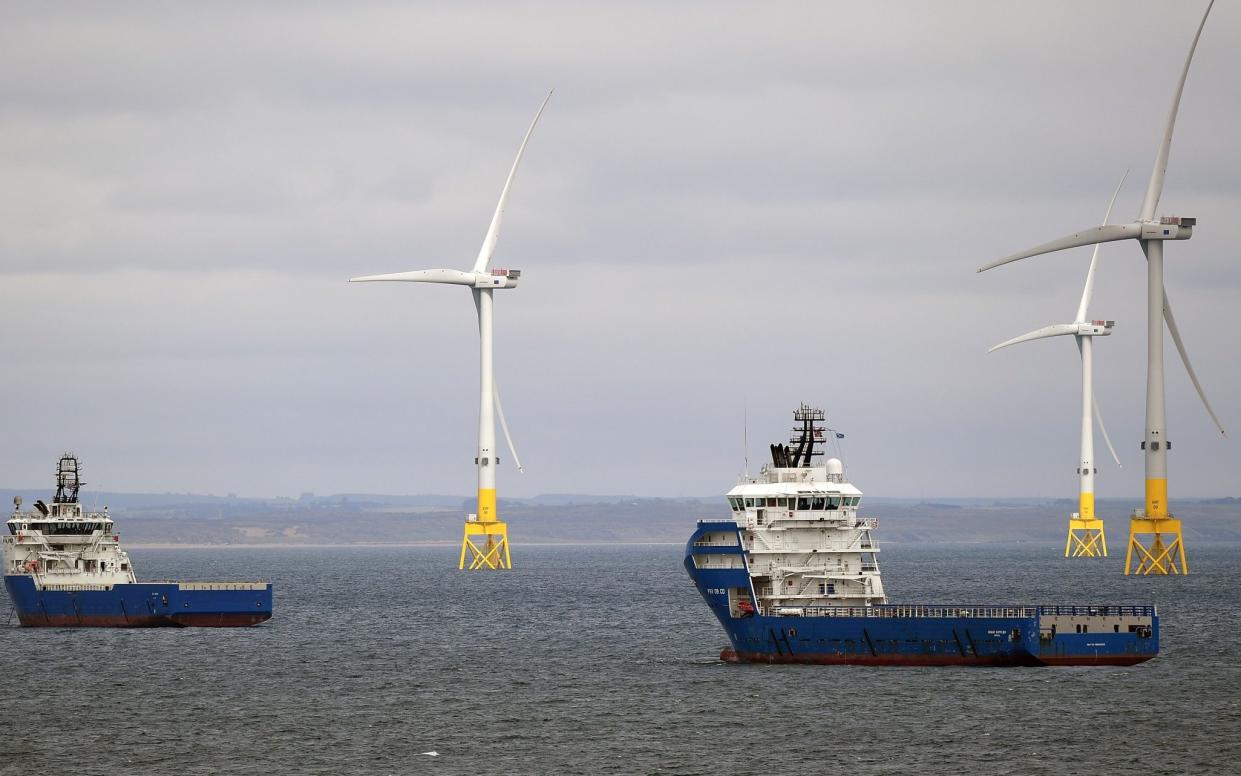World’s biggest floating wind farm to be built off Scottish coast

The world’s biggest floating offshore wind farm is to be built off the coast of Scotland to power North Sea oil and gas platforms pumping fossil fuels to the UK.
The Green Volt wind farm will be made up of 35 turbines, generating 560MW of renewable energy and bringing in around £3bn in investment. The power is intended to replace the current natural gas and diesel energy used to power drilling operations.
The wind farm will have more than twice as many turbines as the next largest floating offshore plant, off the coast of Norway, which has 11. It will also generate six times as much energy, some of which will be transferred back to the grid to power homes in Scotland.
The project, near Peterhead in Aberdeenshire, comes as Britain’s North Sea oil and gas rigs shift to running off renewable power. Green Volt - a joint venture between Scotland’s Flotation Energy and Norway’s Vårgrønn, should reduce carbon emissions by about 1m tonnes per year.
Floating wind turbines lack the foundations of more typical fixed offshore wind developments in shallow waters.
Nicol Stephen, the chief executive of Flotation Energy, said: “This multibillion-pound development can now move forward confidently, creating hundreds of local jobs and proving that the UK and Scottish supply chain is ready to deliver commercial scale floating projects.”
Olav Hetland, the chief executive of Vårgrønn, said: “Floating wind is set to be a huge global market in the decades to come. By being a frontrunner, Scotland is now positioned to be home to world-leading expertise and a whole industry of new jobs.”
Currently, the UK’s oil fields run on diesel or gas generators. The industry is responsible for about 3pc of the greenhouse gases emitted by Britain each year, equivalent to around 17m tonnes of CO2.
The North Sea Transition Authority has ordered the sector to reduce its reliance on fossil fuels. Platform operators will have to reduce their emissions of greenhouse gases by 50pc by 2030, while new platforms must be designed to run on green electricity.
The proposals have sparked concerns from some in the industry over the vast cost of converting or decommissioning older rigs.
Despite approving the Green Volt project, the SNP has been criticised for slow progress in giving the green light to other major wind projects.
On Friday, the Scottish government failed to approve a major project at Berwick Bank, which would have created more than 4,000 jobs, in time to for it to apply for a government contracts for difference auction, which helps set the market price for renewable energy. There will not be a similar auction until 2025.
The announcement comes days after the SNP, which relies on the Scottish Green Party for support in a power-sharing deal, tore up Scotland’s 2030 climate change targets, admitting plans to cut emissions by 75pc by the end of the decade were “out of reach”.
Mairi McAllan, Scotland’s energy minister, told Holyrood that a commitment to reach net zero by 2045 still stood. However, the nearer-term goal was “challenging in the context of cuts and UK backtracking”.
On the Green Volt development, Humza Yousaf, Scotland’s First Minister, said: “Scotland is one of the best places in the world to develop offshore wind and its supply chain and we are determined to maximise the huge economic opportunity offshore wind can bring.”

